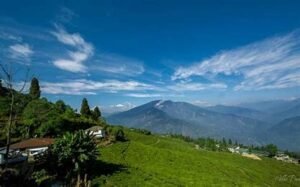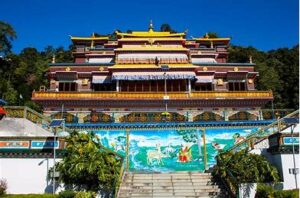Mawsynram, located in the northeastern state of Meghalaya, India, holds the title of the wettest place on Earth. Known for its record-breaking rainfall, Mawsynram offers a unique blend of natural beauty, cultural richness, and deep historical roots. In this blog, we explore the fascinating aspects of Mawsynram, from its climate to its people, their traditions, and the way they’ve interacted with the environment around them.
Historical Roots: Mawsynram’s Connection to the Past
Mawsynram’s history is rooted in its unique geographical location. Surrounded by lush mountains and dense forests, the area has been inhabited by indigenous communities for centuries. The region’s history dates back to the time when early settlers, predominantly from the Khasi tribe, began shaping their societies in the wet, fertile lands. Over time, these communities developed their own distinct cultures and traditions, shaped by the land and its natural resources.
Language and Communication: The Tongue of Mawsynram
The primary language spoken in Mawsynram is Khasi, a member of the Austroasiatic language family. Khasi is widely used in daily communication and is central to the community’s identity. English and Hindi, the official languages of India, are also understood, especially in urban areas. However, it’s the Khasi language that brings the community together, preserving ancient oral traditions and customs.
Khasi is more than just a means of communication; it’s a way of life. The language reflects the region’s deep connection to nature, as many Khasi words describe aspects of the environment, plants, and animals in intricate detail. Through this language, generations have passed down their knowledge of the land, weather patterns, and cultural practices.
Festivals and Celebrations: Honoring Nature’s Bounty
Mawsynram, like many regions in India, is home to vibrant festivals and celebrations that honor nature, deities, and ancestors. One of the most important festivals in the Khasi community is Shad Suk Mynsiem, a festival that celebrates the harvest season. It is a festival of thanksgiving, where people offer prayers for prosperity, good health, and a bountiful harvest.
The Behdienkhlam Festival, another popular festival, is a celebration of good harvest and blessings for prosperity. During this festival, villagers engage in traditional dances, colorful processions, and a display of gratitude toward their deities. The festival draws attention to the importance of community, nature, and the environment in sustaining life.
Arts, Crafts, and Music: Cultural Expression in Mawsynram
The people of Mawsynram are known for their artistic talents and craftsmanship. The region is rich in handwoven textiles, particularly Khasi shawls and wraps made from cotton, wool, and silk. The intricate patterns on these textiles are passed down through generations and often carry deep symbolic meanings related to the tribe’s beliefs and natural surroundings.
In addition to textiles, the region is renowned for its woodwork, pottery, and beadwork. Khasi jewelry, particularly made of silver and beads, is a beautiful representation of the region’s cultural and spiritual values.
Music also plays a significant role in Mawsynram’s cultural life. Traditional Khasi music features instruments such as the Ksing, a type of drum, and the Tiew Rymbai, a bamboo flute. These instruments accompany traditional songs and dances, creating an atmosphere that connects people with their land, their ancestors, and their spirits.
Cuisine and Culinary Traditions: A Taste of Mawsynram
Mawsynram’s cuisine reflects the abundance of nature. The people of Mawsynram are known for their simplicity in food, often relying on locally available ingredients. Rice is a staple, and dishes like rice with pork, chicken curry, and vegetable stew are common in daily meals. Pickles made from fermented bamboo shoots or other local vegetables add a spicy kick to meals.
The region’s humid climate and abundant rainfall provide the perfect environment for growing a variety of crops, such as potatoes, maize, and cabbage. Freshly grown vegetables often form the base for many dishes, making them healthy and nutrient-rich.
Attire and Ornamentation: Dressing for the Elements
The people of Mawsynram wear clothing suited to their climate and culture. Traditional attire for women often includes a Phad (a type of wrap-around skirt), paired with a blouse and a shawl. The Phad is typically made from handwoven fabric and features unique patterns that represent the wearer’s tribe and region.
Men traditionally wear a dhoti or lungi paired with a shirt or tunic, often adorned with cultural ornaments. Beads and silver jewelry are commonly worn, not only for decorative purposes but also for their spiritual significance.
Beliefs and Values: A Deep Connection to Nature
The people of Mawsynram have a deep spiritual connection to nature. They believe that their well-being is closely tied to the land and its cycles. The Khasi people practice animism, worshiping the natural elements such as water, trees, and mountains. Deities are believed to reside in these natural elements, and worship rituals are performed to maintain harmony between humans and nature.
The wet climate of Mawsynram is seen as a blessing, as the abundant rainfall brings fertility to the land. Local beliefs emphasize respect for nature, the importance of conservation, and the interconnectedness of all living things.
Customs and Etiquette: Social Norms in Mawsynram
In Mawsynram, customs and etiquette play an essential role in maintaining social harmony. Hospitality is a core value, and guests are warmly welcomed with food and drink. When visiting someone’s home, it is customary to greet with a handshake or a traditional “khasior” (blessing gesture), which signifies respect and goodwill.
During important community events, social order is maintained through the participation of elders, who offer wisdom and guidance. Decision-making is often a collective process, with the opinions of the elders holding significant weight.
Architecture and Symbols: Building in Harmony with Nature
The architecture in Mawsynram reflects the region’s climatic conditions and cultural values. Traditional Khasi houses are made from locally sourced materials such as bamboo, wood, and thatch. These structures are designed to withstand heavy rainfall and are built with sloping roofs to allow rainwater to flow off easily.
The Khasi living house, known as Nongshohnoh, is typically a communal space where extended families live together. The use of natural materials ensures that these homes blend seamlessly with the environment.
Symbolism is also integral to Khasi architecture. Sacred groves or groves of deities are found near many homes, as they are believed to be the dwelling places of spirits.
Oral Traditions and Storytelling: Passing Down Knowledge
In Mawsynram, storytelling is an essential part of the community’s cultural heritage. Oral traditions are used to pass down knowledge about history, culture, and the natural world. Folklore, myths, and legends are shared from one generation to the next, often through songs, chants, and storytelling sessions around the hearth.
These stories often focus on the creation of the world, the relationships between humans and nature, and the importance of living in harmony with the environment.
Interactions with Nature: Living with the Elements
Living in Mawsynram means embracing the elements. The region’s heavy rainfall affects every aspect of life, from the way homes are constructed to the methods used in farming. People here have developed a unique resilience to the environment, learning to adapt and live with the constant rain.
The Khasi people are skilled in managing water resources, constructing rainwater harvesting systems to collect and store water for use during drier periods. They also practice sustainable farming techniques that preserve the natural fertility of the land.
Challenges and Preservation: Protecting Mawsynram’s Legacy
Mawsynram faces several challenges, including the effects of climate change. Changes in rainfall patterns, deforestation, and the impact of modern development pose risks to the region’s delicate ecosystem and way of life. Conservation efforts are vital to ensure the preservation of both the environment and the cultural traditions that define Mawsynram.
Contributions to Society: Mawsynram’s Global Impact
Despite its remote location, Mawsynram has made significant contributions to society. The region’s unique weather patterns have drawn the attention of climate scientists and researchers around the world. Studying Mawsynram’s rainfall patterns provides critical insights into global climate systems and water conservation methods.
Moreover, the traditional practices of the Khasi people, particularly in sustainable living, offer valuable lessons in how to coexist with nature in a changing world.
Connection to Northeast India: Mawsynram’s Role in the Region
Mawsynram is a crucial part of Northeast India. It is not only one of the wettest places on Earth but also a cultural hub of the Khasi tribe. The region’s diversity, rich traditions, and environmental importance make it a valuable part of the greater Northeast Indian landscape.
Conclusion: Embrace the Wet Wonder of Mawsynram
Mawsynram, the wettest place on Earth, is not just a geographical marvel but a cultural treasure trove. Its history, traditions, and resilience in the face of nature’s challenges offer a unique window into life in one of the world’s most fascinating climates. By learning about Mawsynram, we not only appreciate its natural wonders but also understand the importance of preserving its environment and cultural heritage.
Let’s all take inspiration from Mawsynram’s people and their deep connection with the earth as we work to protect our planet’s future.




